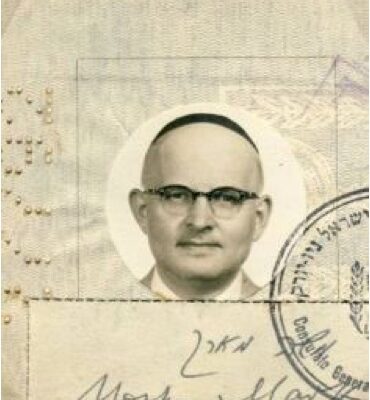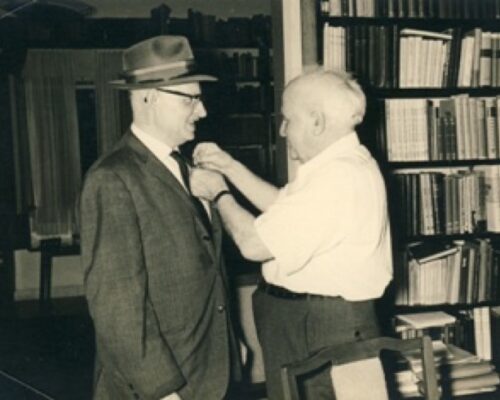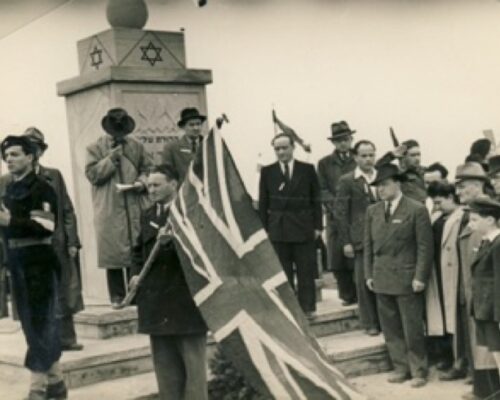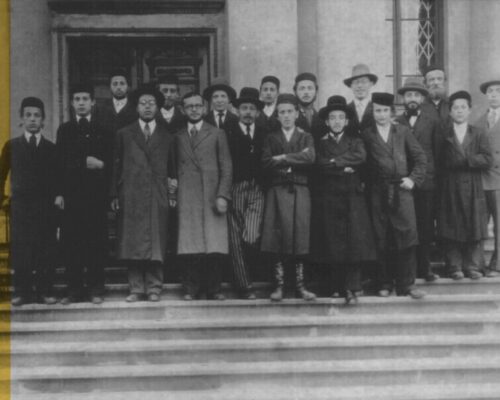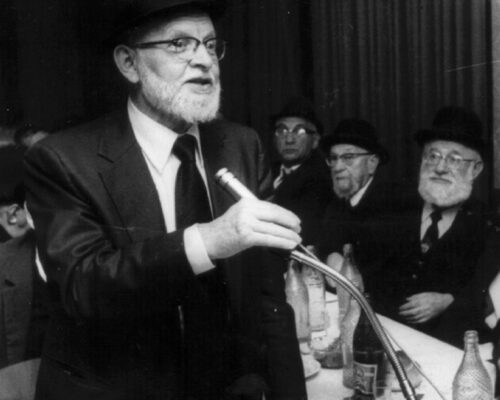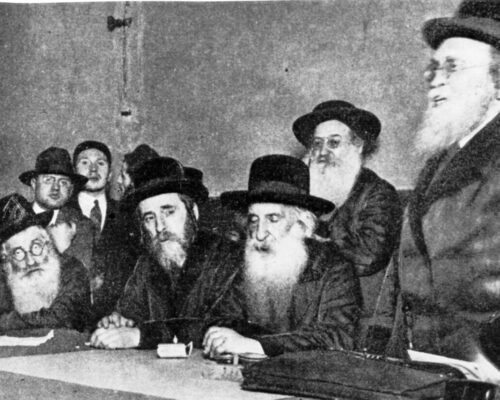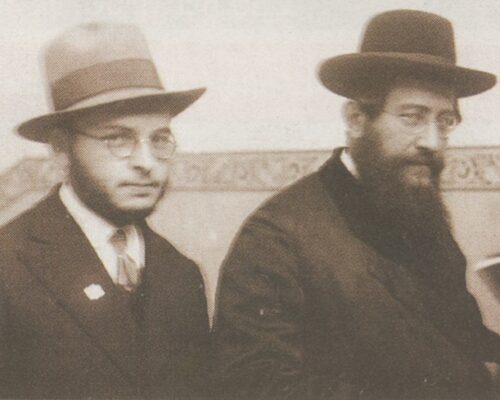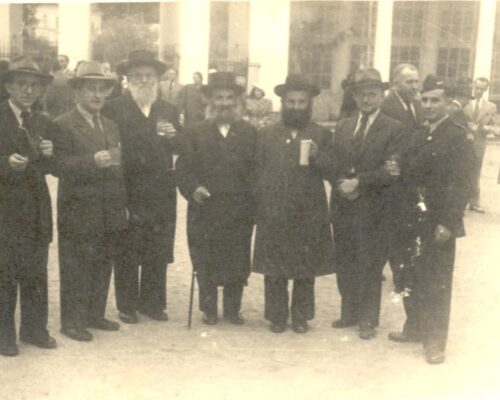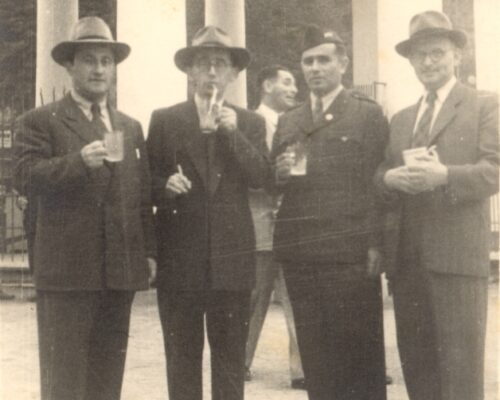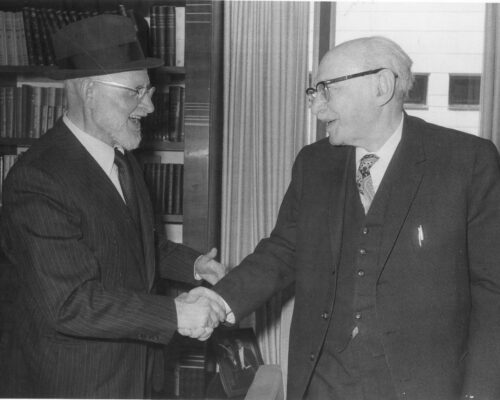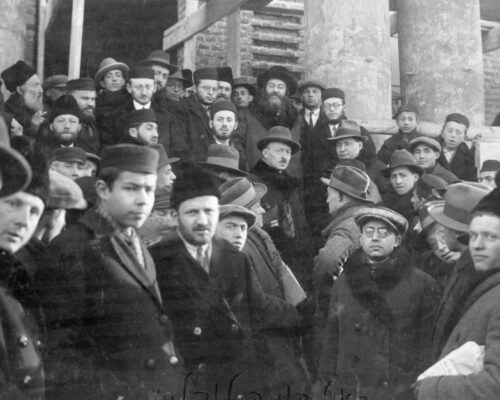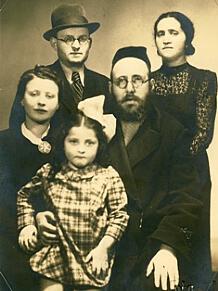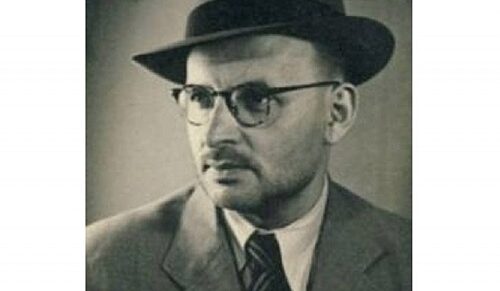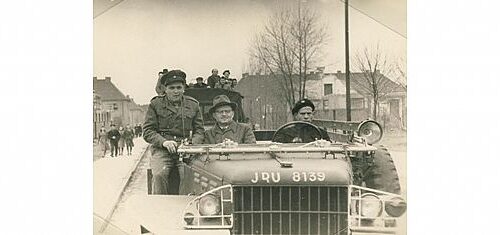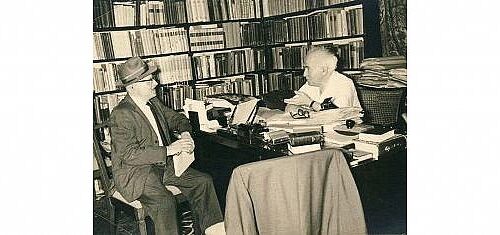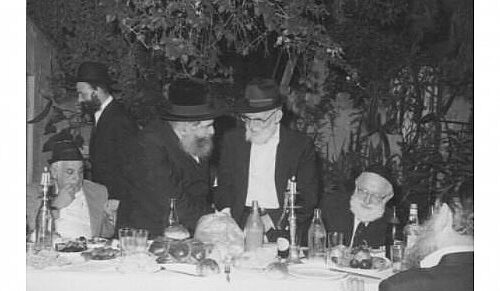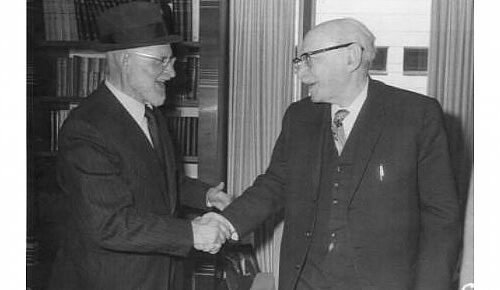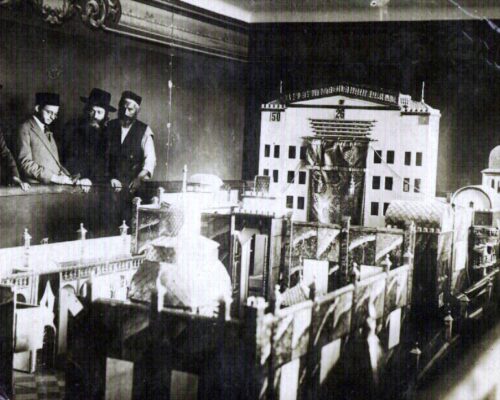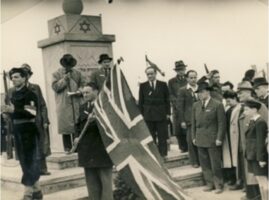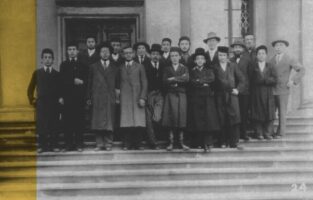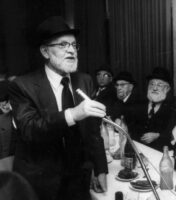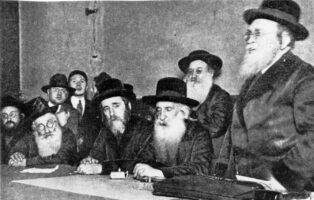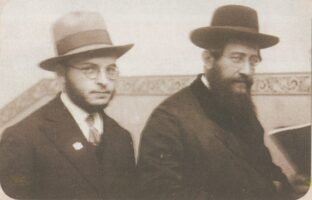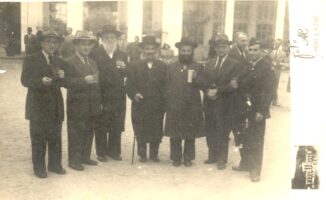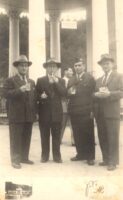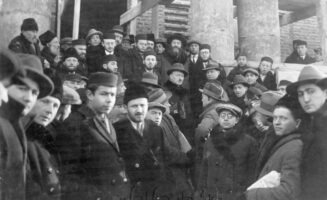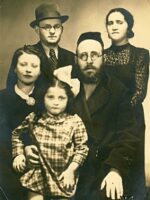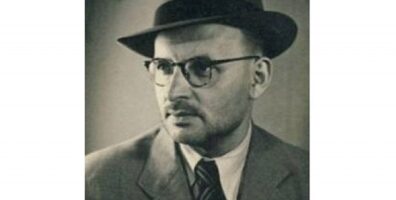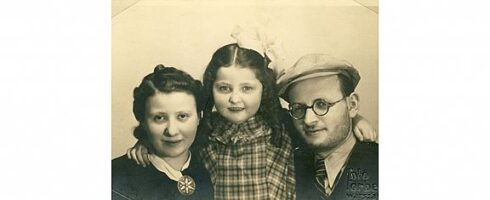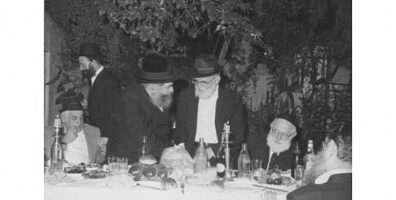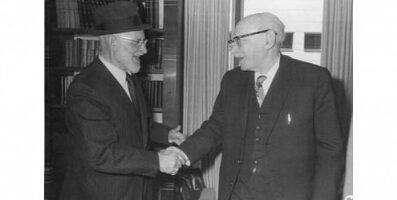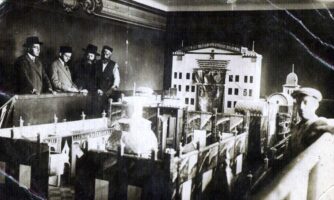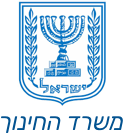Timeline of Rabbi Prager’s Life
Rabbi Moshe Prager (formerly Rabbi Moshe Mark) was born in 5669 (1909) in Praga, a suburb of Warsaw, Poland. His parents were among the followers of the Gerrer Rebbe in Poland, Rabbi Avraham Mordechai Alter. Known as a gifted writer, he worked in the Charedi press in the interwar period and was one of the editors of the Yiddishe Tagblat (The Jewish Daily) newspaper.
1909His pioneering work in the field of Holocaust research began with the Nazi invasion of Poland, when he established a secret office, next to the office of the Joint in Warsaw, whose purpose was to collect material from various sources and send it to the free world and call upon them for help. In 5700 (1939) following great efforts to save the Gerrer Rebbe, known as the “Imrei Emet,” Rabbi Moshe Prager joined the delegation accompanying the Rebbe on his way to Israel. He succeeded in taking along original documentation. Rabbi Prager, who lost his wife and children in the Holocaust, saw in the miracle of his survival a Divinely ordained mission to mourn the victims of the Holocaust and to recount its horrors, while upholding the torch of faith and celebrating the rebirth of the Jewish People, as “G-d will not forsake His nation, nor will he abandon His inheritance” (Psalms 94:14). Rabbi Prager changed his original last name, Mark, to Prager, derived from the suburb of Warsaw in which he was from, Praga. Rabbi Prager took his new name during the Holocaust when he was forced to hide his identity but chose to remember his origins and Warsaw – a Jewish world that is no longer, faded away in fire and smoke.
1939Once he settled in Israel, Rabbi Prager continued his holy mission and began to publish his writings, to warn people and to them people hear the screams of the Jewish People becoming extinct on European soil. In the month of Elul 5701 (September 1941), when he heard the first pieces of horrific news arriving from the Valley of Tears, he published his first story about the Holocaust: “The New Yeven Metzula – The Jews of Poland in the Claws of the Nazis,” which was published by Masada Publishers. The original Yeven Metzula, translating as “Abyss of Despair,” was a book written by Rabbi Natan ben Moshe Hanover in the 1600s about the Chmielnitzky Massacres. During the war years, Rabbi Prager published articles and research describing the Nazi destruction process, mostly publishing in the “Davar” (Word) newspaper. Postwar, Rabbi Prager travelled to displaced persons camps to personally meet with survivors. With a sense of mission, he raised the spirits of the persecuted and oppressed, the survivors. Upon his return to Israel, he wrote a series of articles that were published in the writer’s association newsletter, “Maazanim” (Scales).
1941In the year 5708 (1948), Rabbi Prager’s documentary book, “The Destruction of Israel in Europe” was published by United Kibbutz Publishers. Till today, the book is used as a key book on Holocaust history. A prominent Holocaust researcher, Dr. Nathan Eck, wrote that the book was “the product of Rabbi Mosher Prager’s commendable effort, which appeared on the scene when Holocaust research was in its infancy.” Over the decades, Rabbi Prager authored many books and studies on the Holocaust and additional subjects connected to Jewish History, in addition to hundreds of articles in various mediums.
1948In the framework of his vast research, after interviewing hundreds of Holocaust survivors, he published his book “Sparks of Glory” in which he told of the spiritual strength of those facing terrible conditions. His book “Those Who Never Yielded,” described the experiences of the Chassidic resistance movements in the ghettos and was based on testimonies of survivors. These books were widely circulated and were translated into several languages. In light of his extensive publications in the field of Holocaust research, the Hebrew Encyclopedia invited him to write the entry on the “Nazi Manifestation of Antisemitism,” an exhaustive forty-column study which portrayed the Nazi antisemitic movement and the roots of its war on Judaism. His prolific writings continued to enrich the treasure trove of research and literature with authentic writings for young people, adults, and researchers. Rabbi Prager wrote all of his works with a deep sense of mission and responsibility, reflecting his sensitivity. Until his last day, he continued to follow newly discovered archival material. In these documents he found validation for his assertion that the Nazis specifically aimed to destroy those who carried out the Jewish heritage and traditions. He therefore felt that the Nazis’ main goal was a war against the Torah and spirit of Judaism. In light of this, the spiritual and moral values of the Jews were revealed in his documents, expressing the Jewish heroism in those years of terror and rage.
1952Photo Album

